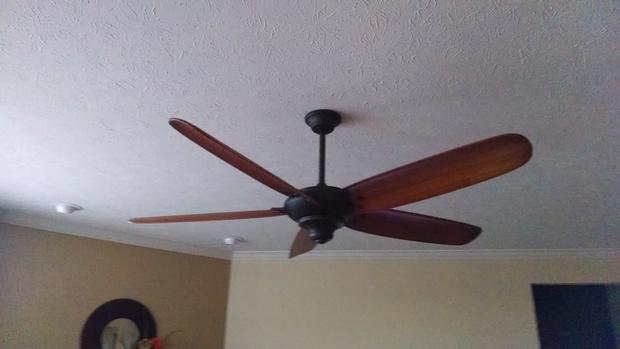Ceiling Fans Make Homes Look (and Feel) Cooler
See if We Have Top-Rated
Handyman in Your Area

Is your home excessively hot in the summer and cold in the winter? In response to the fluctuating temperature, do you crank up the air conditioning and furnace? If so, you're probably accumulating large energy bills for your home. One of the best solutions to these heating and cooling problems are ceiling fans because they not only save you money and offer relief, but they can also add a stylish look to your home's decor.
Design and Style
Since all fans provide some kind of relief, the first thing you may want to consider is style. They come in a large variety of colors, sizes, and materials and offer many different forms of motor housings, blade types, and lighting units. Do you want you fan to be invisible? Do you want it to pop out and be on display? Do you want it to blend in with the rest of your home's look? When in the market for a fan make sure to at least consult a professional who may be able to give you fashion tips as well as more practical advice about efficiency, durability, and size.
Also, don't forget lighting. Many fans come with an assortment of different lighting systems that can add to their elegance. The newest trend is "uplighting," which mounts units facing toward the ceiling and offers a soft and subtle cast of light throughout the room.
Operating Systems
An important component to research in ceiling fans is the motor. Motor power determines how fast a room is cooled, but larger motors can also create a lot of extra noise and expend more energy, increasing its short-term and long-term costs. There a variety of motors out there and a lot depends on the amount of use the fan is going to get. So always make sure to you select the appropriate size motor that will fit your room's specific needs.
Blades are another important factor when selecting a ceiling fan. They also come in an infinite number of styles and sizes, so make sure you pick the right blade to fit your needs. Most of this depends on where you are going to install the fan. If indoors, the main thing to look for is pitch: at what angle is the blade situated in relation to the ground. A lot of this hinges on the motor size of the fan, and don't fall into the trap of thinking that a steeper pitch provides more cooling: steeper pitches may be trying to compensate for weaker motors. But if you're placing your fan outside, make sure that the blades are sealed for moisture. Many blades come with damp ratings (for bathrooms or kitchens) and wet ratings (for patios), so make sure to look at these moisture scores before buying.
Hire one of our local Handymen to install a
Ceiling Fan
Accessories Available
Many ceiling fans today come with remote controls or wall units for your convenience. Though all fans come with a pull-chain for adjustments, these remote accessories are able to control the rotation and speed of your fan from a distance. Some fans come with dimmer controls that, like lights, can slowly regulate the speed of the blades. However, these dimmers can create a perpetual hum in the motor. Therefore, to avoid any excess noise, try to choose a remote that has 3-4 separate speed settings.
Efficiency Tips
For additional savings, here are some things to keep in mind:
Energy Star: Buying an Energy Star qualified fan means that the unit has been approved for energy savings. These fans (and lighting units) are about 50% more efficient than traditional fans, helping to save the environment and your budget.
Turn It Off: Contrary to popular opinion, fans don't cool rooms; they cool down people in rooms. So to save on your energy bills, turn the fans off in rooms that are not be used.
All-Year Savings: Fans can be used in both summer and winter. In the winter, simply reverse the blade rotation. This allows the rising warmed air in your home to re-circulate the room for added comfort.
Replacement Parts: Since fans run all year, make sure you have parts that are easily replaceable. Even if you buy the most efficient, durable fan, they will need maintenance at some point. So by having replacement parts readily available, you'll be able to quickly fix the problem without inconvenience.
By creating a wind-chill effect, ceiling fans have been known to drop room temperature's down by ten degrees. This allows you to set your thermostat at a higher setting during these hot, summer months, yet still be able to cool down your home and ultimately your utility bill.
More Tips & Advice For Your Home
- Related Articles
- Recent Articles

